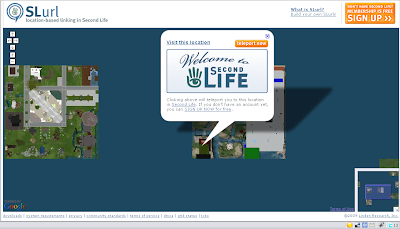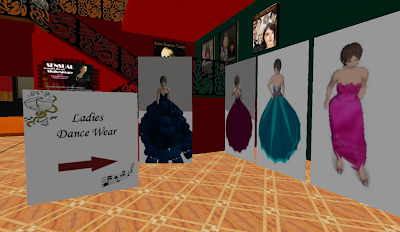 Thank you
Thank you At this point I would like to thank
Otago Polytechnic for providing access to Elluminate, and the midwives who gifted their time to make live presentations or provide asynchronous resources. I have recorded the live sessions and posted the links to them on the
wiki.
I am also hugely grateful to the few midwives who kept me company through the day, especially
Pauline Costins (Perth) and Deidre (Holland). And last, but certainly not least, I would like to thank
Jo and
Phil Hart, as well as
Carole McCulloch for all their support, help and advice they gave me about Elluminate at the drop of a hat. As soon as I put out a call for help on
Twitter, they responded – they made the logistical managing of Elluminate so much easier, and I have learned a heap from them – THANK YOU!!
Background Last year I organized a series of
online seminars for midwives which were very successful. I meant to do the same this year, but workload has prevented me. I played with the idea of a 24 hour virtual event as a means of catering to all the world’s time zones, and then about a month ago Deborah and I had
the idea to combine it with International Day of the Midwife on May 5th.
Advertising We advertised the event to our personal networks as well as three international midwifery email groups, two education email groups, five Facebook groups, and two midwifery specific forums, one midwife wiki and Twitter. The most effective of these modes of advertising in terms of attracting presenters and participants were email groups.
Live events The live events attracted extremely small numbers, averaging six people per session (including speaker and facilitator). The Second Life events attracted the biggest number of participants. I was thrilled at how well Elluminate worked. We only had one session that did not work, and I think that was because we were too ambitious in what we were trying to achieve.
The two things that ensured the smooth running of the Elluminate sessions were having people on-hand to trouble-shoot problems, as I have already mentioned. The other thing was getting people to check the technology and have practice runs before the live event.
 Image: 'birth05' www.flickr.com/photos/48819968@N00/12647639
Image: 'birth05' www.flickr.com/photos/48819968@N00/12647639
Asynchronous events We had a wide range of asynchronous ‘events’ or resources ranging from videos to PowerPoint presentations, slidecasts and the production of a Wordle. At the time of writing this reflection, the resources that have been visited the most are Animoto video “
International Day of the Midwife” on YouTube (233 views) and my own reflection about being a midwife on
Slideshare (183 views).
Survey I asked participants to complete a
survey - 10 people responded. When asked about the quality of the events, 66% people said they were were very good and 33% said they were good. All the participants felt the 24 hour event should be repeated next year. Here are the suggestions from participants for topics to be explored next year:
- All ideas welcome. I like watching videos and slideshows. I love expanding my knowledge and discussing with other midwives.
- A 'fun' activity and meeting for students
- How to improve relations between students, midwives, doctors and other health professionals
- Women and reproductive health
The main change people would like next year is for more notice so they can tell their friends, colleagues & networks about the day (44%).
My personal reflections My initial reaction was that the event was a failure – the numbers of people who attended the live sessions do not justify the amount of time that Deborah and I put into the project, both in terms of development of the program and facilitation on the day. As you can imagine, organizing the event was hugely time consuming what with developing the program, sorting out the technology, advertising, making resources and maintaining the wiki.
On further reflection, I now have a different take on the day. I am extremely proud of what Deborah and I managed to achieve in just one month, with no support and on an entirely voluntary basis. For me, personally, the day was hugely successful. I ‘met’ midwives from Pakistan, USA, Holland, Tunisia, Burkina Faso, Switzerland and Cyprus – midwives I would never have communicated with before the day.
The other thing I am mindful of is the ongoing value of the resources and recordings. Whilst there may have been small numbers attending the live sessions, the recording are available for people to access, as and when they need to. So the contribution of the day to international midwifery knowledge is un-measurable at this stage.
Collaborating and networking Particularly exciting has been the connections I have made with midwifery educators who have a similar interest in Second Life – I am very hopeful that these connections will lead to further collaboration. One exciting conversation I had was about online education and the opportunities we have for sharing educational resources on commonly viewed sites such as YouTube -we all agreed that sharing resources is hugely advantageous for us as educators. But more importantly, student midwives throughout world will benefit hugely. If one educator shares one resource on YouTube or else where, that is a great outcome for the day.
Plans for next year I asked participants if we should repeat the virtual 24 hour event next year and the response was an over-whelming affirmative. Whilst numbers of participants were small this year, the consensus was that if we keep working on events like this, people will become more familiar with the concept and more confident to use the technology. This year’s event is modeling what is possible to achieve in terms of networking and sharing information.
ChangesHere are the changes I would recommend next year if we repeat the event:
- Plan the event much earlier so we can get people to commit to the project - a number of people were interested in presenting but were too busy at the time.
- Start advertising the event earlier.
- Coordinate more effectively with the ICM.
- Ask some 'big midwifery names' to present, to attract a bigger audience.
- Get a team of people together who can facilitate throughout the time zones so that the burden does not lie with just a couple of people.
- Have a team of people 'on-call' to address technological problems.
Peer-reviewed conference?There is an argument that to attract academics we should make the event a peer-reviewed virtual conference, to give more credibility to the event. But I am very resistant to that idea. I want this event to be very easily accessible, so would not want to put up barriers to midiwves who are not academics. For me, the emphasis of the event is on networking, not academic research outputs.
What topics would you like to see addressed in this event next year? What would encourage you to 'attend' - what are the barriers that would prevent you?
Image: 'midwives deliver!'
www.flickr.com/photos/48889113547@N01/2851176364
 Here is the plan for delivering information about eMentoring as part of the eMentoring project I am coordinating for Aged Care Queensland, which is funded by the Dept. of Health and Aging.
Here is the plan for delivering information about eMentoring as part of the eMentoring project I am coordinating for Aged Care Queensland, which is funded by the Dept. of Health and Aging.




























